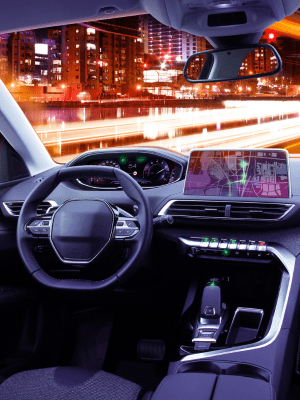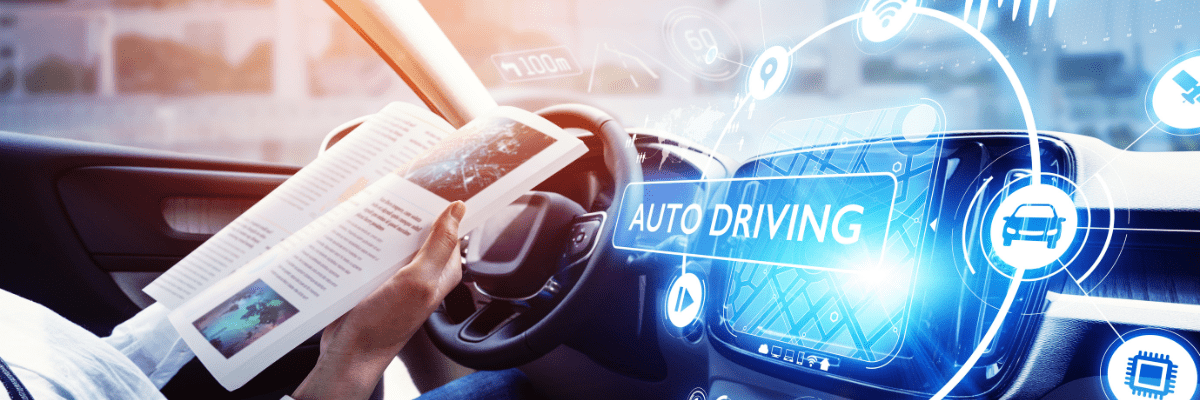The concept of self-driving vehicles represents one of the most transformative technological shifts in the modern transportation industry. Autonomous vehicles, powered by advanced algorithms, sensors and artificial intelligence, have the potential to reshape not only how we travel but also the entire economic and social framework surrounding mobility.
However, the reality of this transformative journey is characterised by failures, success stories and challenges. Examining where self-driving technology has proven effective and where it has encountered difficulties offers a nuanced perspective on its future, especially when factoring in the broader economic and social implications and the cascading effects on industries and employment.
Self-driving vehicles work well in controlled environments where variables can be closely monitored and managed, such as dedicated lanes or routes with minimal external interference. For instance, companies like Waymo and Cruise have been running autonomous taxis in specific city districts, achieving a level of success in areas like San Francisco. In such environments the technology has demonstrated its ability to safely transport passengers bypassing the risk of human error, which is often the cause of accidents. Logistics companies have also seen a rise in efficiency through autonomous delivery vehicles. Large corporations like Amazon have been exploring autonomous last-mile delivery to reduce operational costs while improving delivery speed.
However, despite these promising developments, self-driving vehicles still encounter significant challenges when faced with complex, unpredictable environments. Urban settings, where human behaviour is erratic and infrastructure is not designed for autonomous systems, pose a significant risk. Pedestrians, cyclists, animals and other random or other unexpected events, such as road work or accidents, can confuse even the most advanced AI systems. Incidents like the fatal self-driving car crash in 2018 underscore the sort of issues that AI technology faces. While strides have been made in improving safety, the system’s inability to handle all variables in real-time shows there is still a long road ahead before autonomous vehicles can be widely deployed across different real-world contexts.

As an example, the parameters and decision making protocols for the AI algorithms are critical in determining how an autonomous vehicle will respond to any given circumstances. Faced with a real time emergency choice of deciding whether to crash into pedestrians on the left hand side of the road or the right hand side of the road, what decision will the algorithm instruct the car to take?
The economics of driverless vehicles present both tremendous opportunities and significant challenges and disruptions. On the one hand, companies stand to gain immensely from automation. For businesses dependent on transportation, such as logistics and ride-sharing services, the cost savings from removing human drivers is substantial. Fuel efficiency should improve as algorithms optimize routes and driving patterns. Driverless fleets could also operate continuously, reducing downtime and increasing overall productivity. In addition, there will be savings from a reduction in accidents, insurance costs and vehicle maintenance, given that autonomous systems may wear vehicles more evenly by avoiding erratic driving.
However, the shift to autonomous vehicles will also have deep economic repercussions. The displacement of human drivers is a major concern, particularly for industries like trucking, taxis and couriers where millions of individuals depend on driving for their livelihood. This could lead to social unrest, as entire job sectors become redundant. Moreover, there is the potential impact on industries connected to driving, such as insurance, vehicle repair and even petrol stations. A large-scale adoption of self-driving technology could also lead to urban change, as fewer parking spaces are required and traffic lights and road signage redesigned and re-calibrated. Public transportation systems will also need to evolve, depending on how governments and businesses choose to integrate autonomous vehicles into the fabric of daily life.
The flow-on effects of autonomous vehicles reach far beyond the automotive industry. Real estate, for instance, could experience shifts in demand, as the flexibility of transportation changes how people choose where to live and work. As commuting becomes more efficient and potentially cheaper, urban sprawl could increase, altering the dynamics of housing markets and city planning. Similarly, the rise of autonomous fleets could encourage new business models, such as subscription-based transportation, which could disrupt traditional car ownership. The environmental benefits are also notable, as driverless electric vehicles could significantly reduce emissions and alleviate congestion in major cities.

Insurance
The advent of self-driving vehicles introduces significant complexities to the insurance industry, as the traditional models of liability, risk assessment and underwriting are challenged by a new mobility paradigm. In a world where vehicles are increasingly autonomous, the concept of who is responsible for accidents or damage comes into question. This shift represents one of the most pressing issues for insurers, regulators, manufacturers and consumers alike.
One of the most fundamental challenges revolves around liability. In conventional driving scenarios, insurance is built on the premise that human error is the primary cause of accidents, and therefore the individual driver is held accountable. However, in a self-driving world, the responsibility may shift from the driver to the manufacturer, software developer, or even the provider of the vehicle’s autonomous system. If an accident occurs while the vehicle is in full autonomous mode, it is unclear who is actually at fault and who should be liable. This creates a number of grey areas in determining liability which traditional insurance policies and regulatory frameworks are not currently equipped to handle.
Another significant issue is how to assess risk and assign premiums for autonomous vehicles. With human error removed or significantly reduced, one might expect accident rates to decrease over time. If self-driving cars are proven to be safer, insurance premiums for individual drivers should, in theory, drop. However, if the responsibility shifts to the manufacturer or software developer, the insurance model will need to evolve into something closer to product liability coverage. The complexity of the technology itself adds another dimension to risk assessment, as failures in sensors, AI algorithms, or data processing could lead to catastrophic accidents, the cause of which would be difficult to pinpoint. In such cases, insurers would have to develop new methodologies to analyse risks associated with software malfunctions, cyber-attacks, or hardware failures.
The potential for cyber risks also emerges as a new frontier in the insurance landscape for driverless vehicles. Autonomous vehicles rely on complex systems of communication, connectivity and data transmission, which expose them to potential hacking or manipulation. A cyber-attack could, for instance, disable the vehicle’s safety features or redirect its route, leading to accidents or worse. The question of who bears responsibility for these incidents, whether it is the owner of the vehicle, the manufacturer, or the third-party software provider, further complicates the insurance model.
Insurance companies also face the challenge of gathering and interpreting data from autonomous vehicles. These cars generate vast amounts of data, including driving behaviour, environmental conditions and the vehicle’s performance. While this data could be incredibly useful in assessing risk and assigning premiums, it raises concerns around privacy, data security and the ownership of that information. Furthermore, insurers will need to build new capabilities to analyse and interpret this data effectively, ensuring it is used fairly and responsibly to develop policies.
Regulation around insurance for autonomous vehicles is still in its infancy, which adds to the uncertainty in this evolving landscape. Governments around the world are grappling with how to create frameworks that can address the challenges presented by autonomous vehicles, including the insurance aspect. Regulators will need to consider how to structure liability laws in a way that balances the interests of consumers, manufacturers and insurers while ensuring that victims of accidents are adequately compensated, regardless of who or what is at fault.
In summary, the insurance problems around driverless vehicles stem from a fundamental shift in responsibility from the driver to the vehicle’s technology. This raises profound questions about liability, risk assessment, cyber vulnerabilities and the use of data. Insurers will need to adapt quickly and develop new models to address these complexities and regulators will play a crucial role in defining the legal and operational framework for this emerging field.
Ultimately, while the promise of self-driving vehicles is enormous, the transition at scale will require careful management of both the technological limitations and the broader economic and social implications. Businesses and policymakers will need to navigate this shift with a focus on ensuring that the benefits are maximized while the negative impacts, especially on the workforce, are mitigated.
PrimaryMarkets
For companies that are not listed on a stock exchange, the PrimaryMarkets trading Platform is an ideal way to facilitate the off-market sale of shares in your company.
PrimaryMarkets is a flexible and evolving Platform that responds in real time to the ever-changing investment environment. In doing so it provides sophisticated investors with access to companies that are shaping the future in a wide variety of industries and sectors. We provide access to opportunities previously only accessible to institutional investors. In addition to trading, PrimaryMarkets helps companies raise capital from our global investor data base.
PrimaryMarkets exemplifies how innovation can transform the way we invest, trade and raise capital by breaking down traditional barriers, providing liquidity solutions and promoting transparency.
As the Platform continues to grow and evolve, it promises to unlock even more opportunities for investors and the companies shaping the future of economies.

